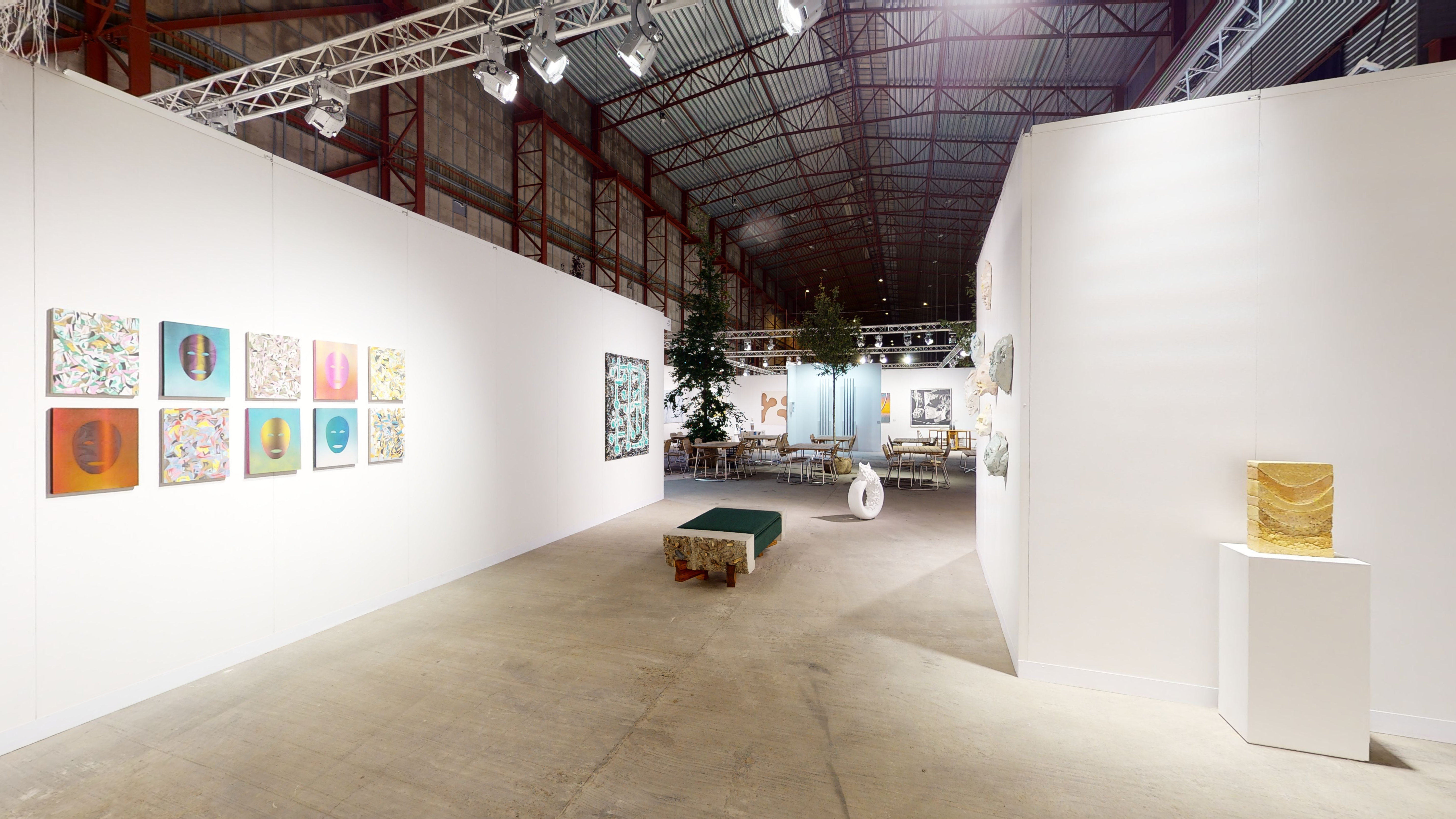NILS STÆRK
·
BOOTH 48
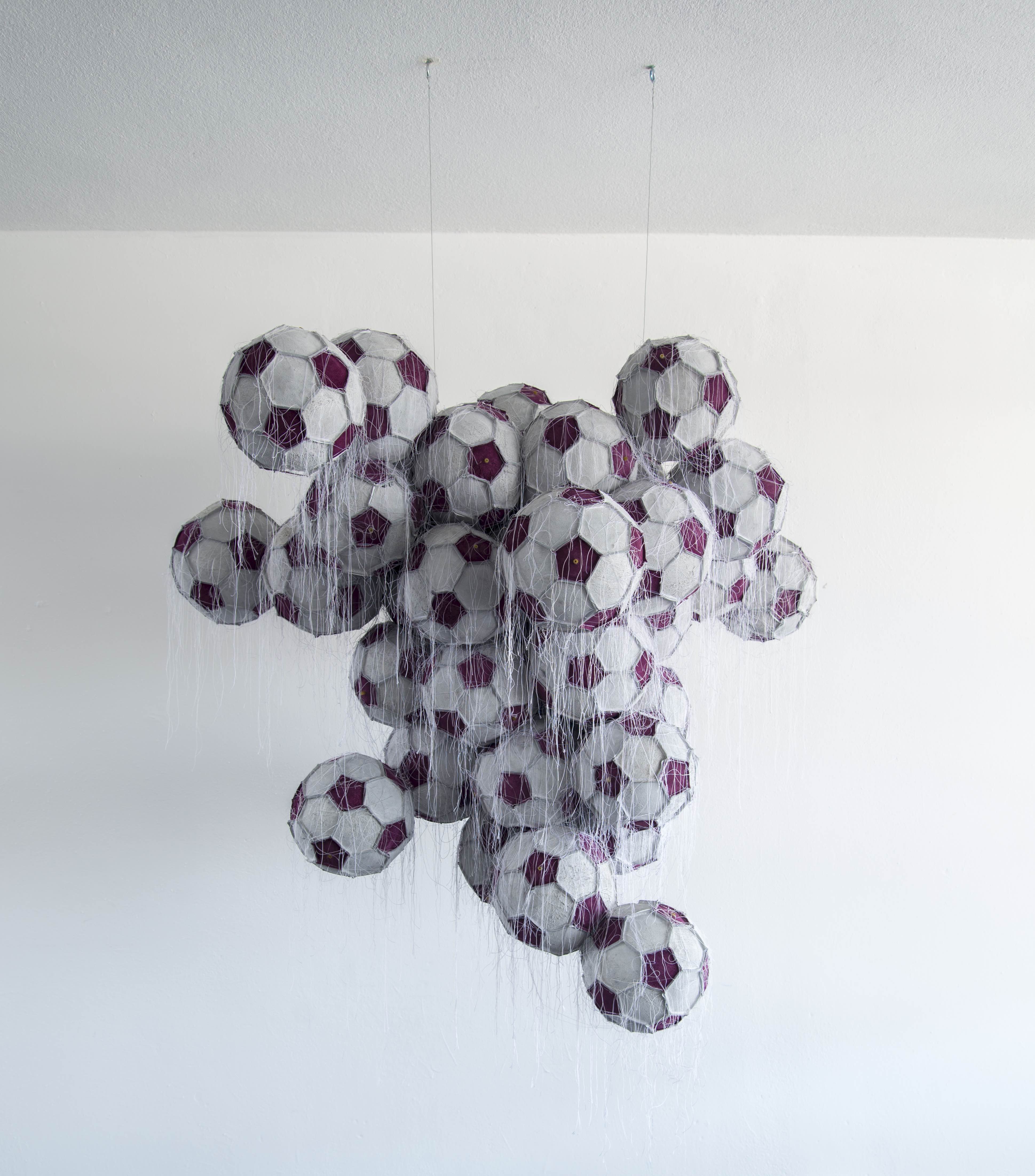
Darío Escobar
Obverse & Reverse XXVIII, 2016
Latex, leather, string and steel
140 x 135 x 90 cm (55.12 x 53.15 x 35.43 in)
Inv: DE 16 004
"The work starts from a reflection about the industrial object, in this case a sculpture formed by football soccer balls sewn among them to form a cloud. It dialogues about the insistence in thinking of the same object in a sculptural operation; a new configuration of an element repeated obsessively, as when exhibiting a product in supermarkets or sport stores. I’m impressed by the space solutions for aisles that can be seen in this kind of places and by the way these solutions also try to make the product more appealing to the eye. This series of works also tell us about the accumulation not from a point of view centered in the ready-made individuality but from the accumulation of the merchandise as raw prime for a contemporary sculpture."
- Darío Escobar
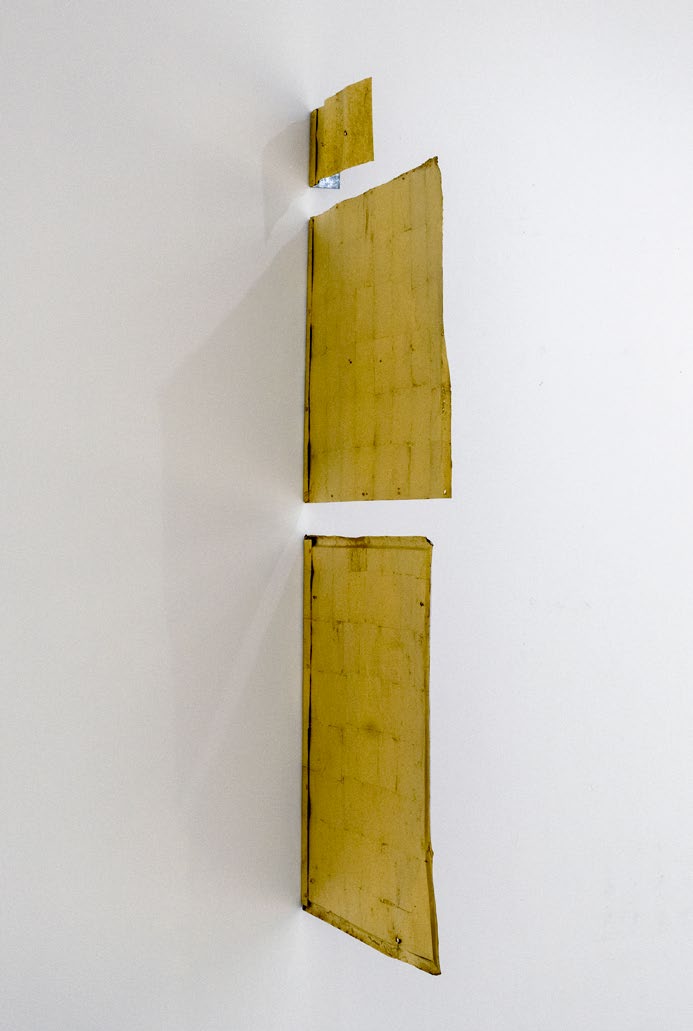
Darío Escobar
Mensajes cifrados no. 14 (Encrypted Messages no. 14) , 2021
Metal, pigments and gold
131 x 66 x 5 cm (51,57 x 25,98 x 1,97)
Inv: DE 21 003

Mads Gamdrup
Oxide Yellow , 2021
Pigment and linseed oil on canvas
180 x 150 cm (70,87 x 59,06 in)
Inv: MG 21 002
In a series of new paintings, Mads Gamdrup continues his lifelong occupation with color research yet moving into a radically new direction both formally and visually speaking. Each painting elaborates on Gamdrup’s interest in monochrome color and its artistic potential in relation to phenomena such as materiality, both physically and psychologically. Working with raw color pigments in the extended field of contemporary art, color can be perceived as a material substance with abstract qualities, giving the pictorial expression a spatiality that opens up, allowing for an individual interpretation.
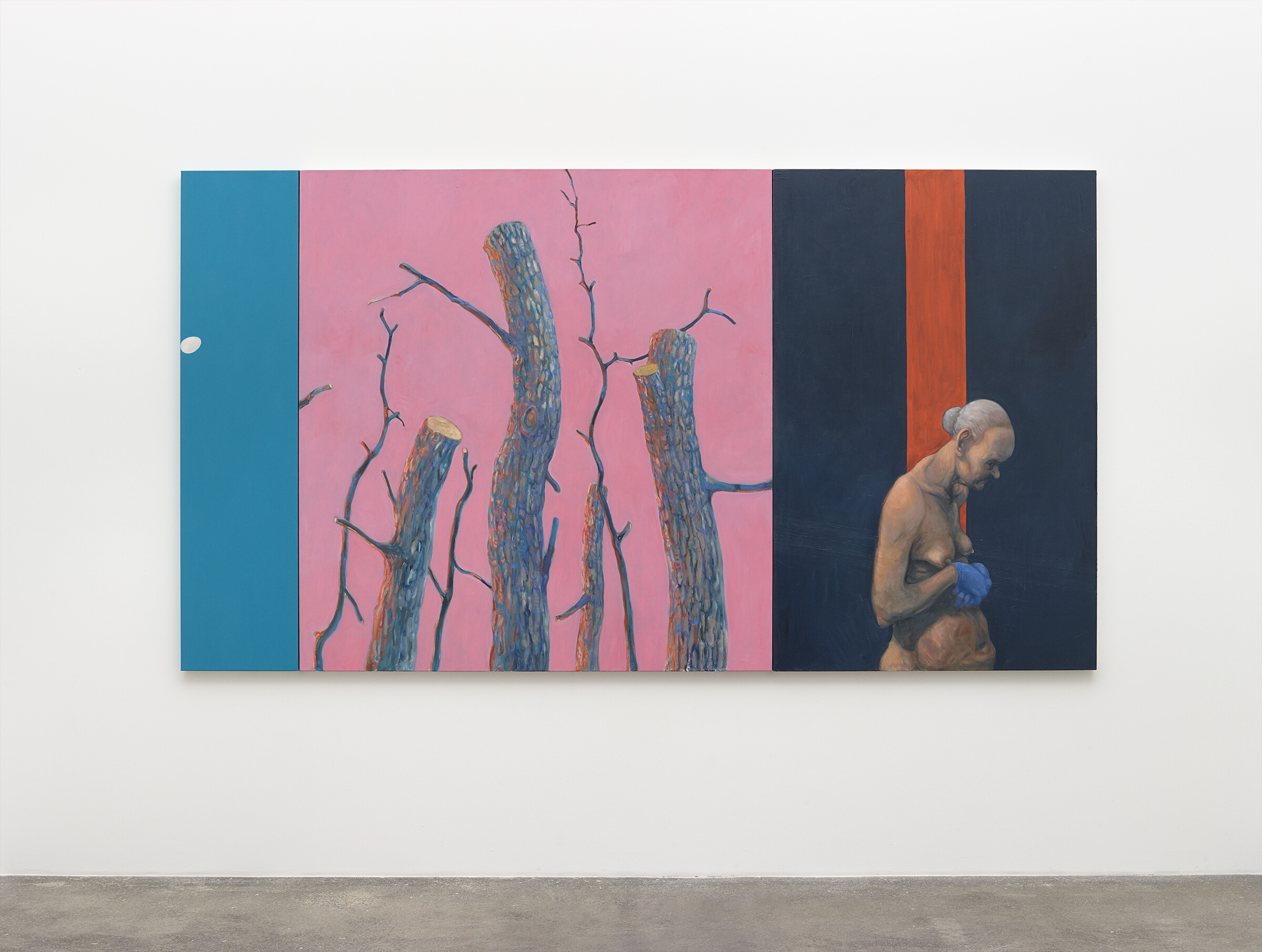
Michael Kvium
Blue Glove Blues, 2021
Oil on canvas
170 x 310 cm (66,93 x 122,05 in) Painting in parts each 170 x 160 cm / 170 x 110 cm / 170 x 40 cm
Inv: MKv 21 005
Michael Kvium (b. 1955) lives and works in Spain and Denmark. Since the paintings and performances of the 1980's Michael Kvium's works have focused on uncompromising descriptions of the aspects of life that we rather hide than expose to observation. Spanish baroque painters such as Goya, El Greco and Velazquez largely inspired his artistic practice from the beginning. In recent years Kvium's grotesque and perverted depictions of the human body are accompanied by beautiful landscapes and animal motives. The theme of death has a constant presence in Kvium's works, reminding us of the paradoxical consequence of conception.
Kvium’s work points towards a certain figurative realism with clear narrative elements. This narrative element was uncommon in the 1980’ies when Kvium experienced his breakthrough as an artist. His works can often be read in the light of the 1980’ies collapse of the ruling systems and the loss of meaning related to these collapses. Kvium’s way of staging the motives in his paintings contain associations to a theatre stage. This theatrical touch underlines the prominent performative aspect of his practice.
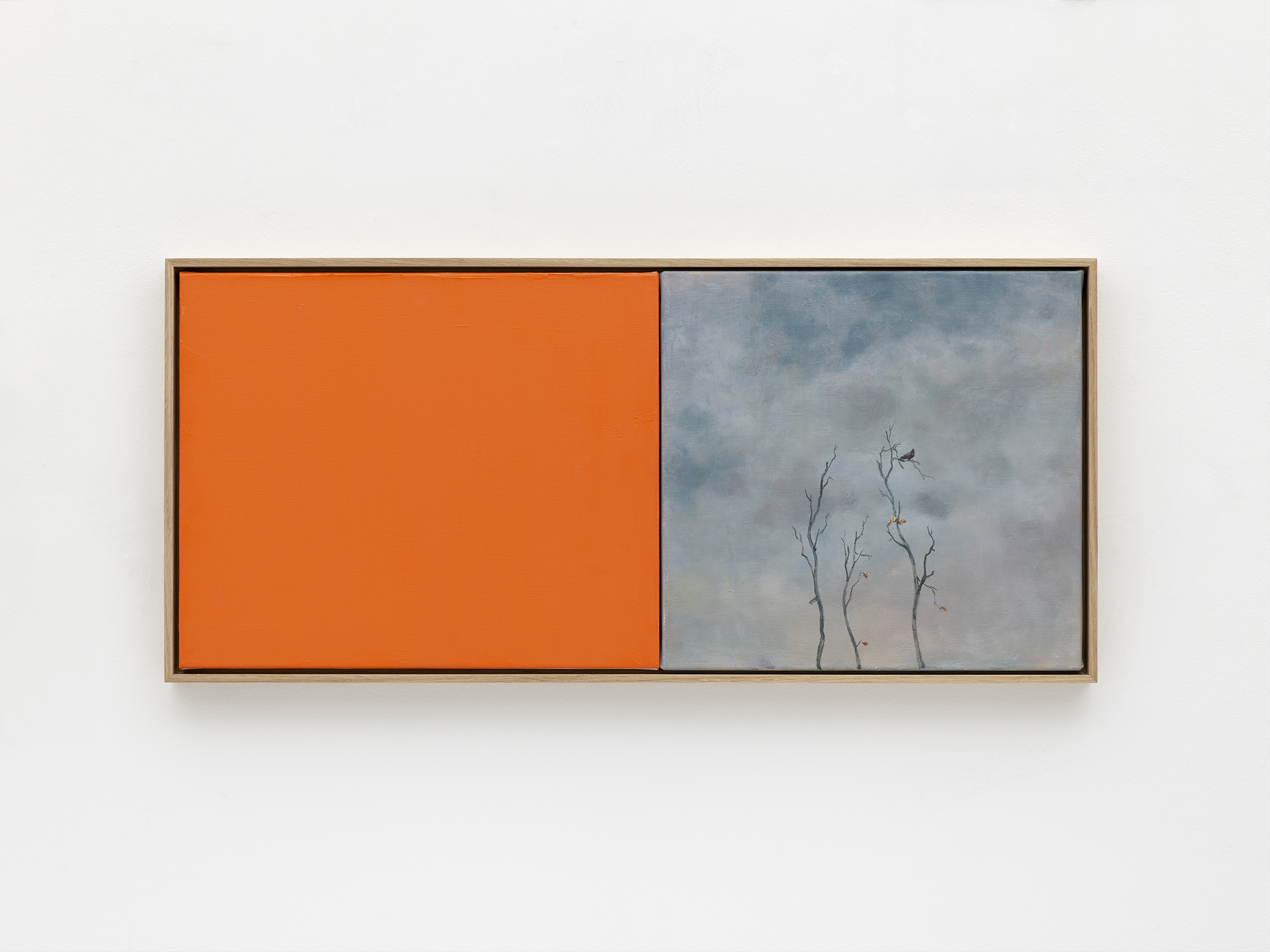
Michael Kvium
Above the horizon , 2021
Oil on canvas
Canvas dimensions: 40 x 84 cm (17,75 x 33,33 in) (two parts each 40 x 38 / 40 x 46)
Inv# Mkv 21 012
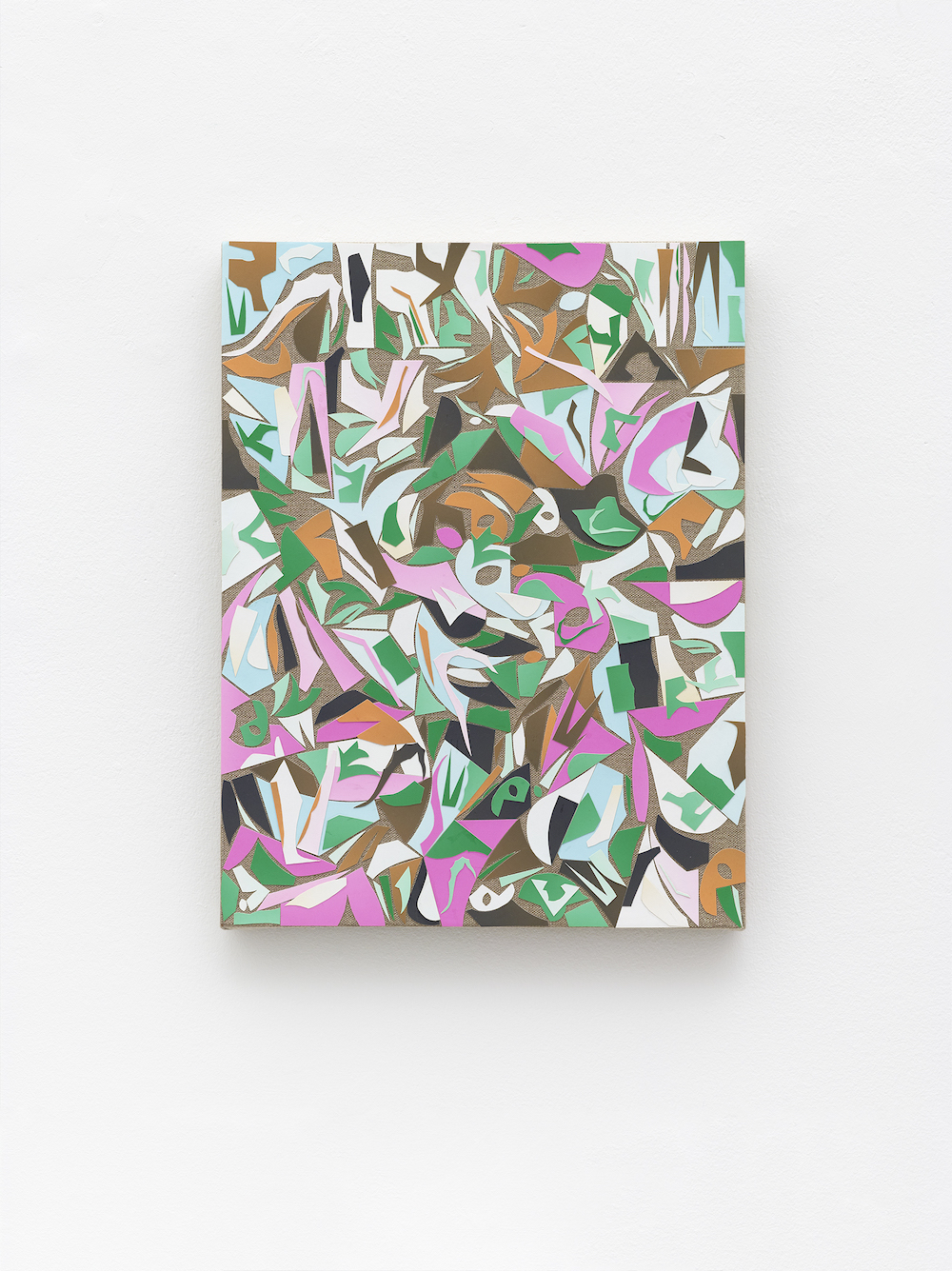
Carlos Amorales
Jungla de estrellas (Star Jungle) 19, 2021
Collage of printed cardboard on canvas
40 x 30 cm (15,75 x 11,81 in)
Inv: CAm 21 004
In recent years, Carlos Amorales has investigated the possibilities of color. His latest series, Jungla de estrellas (Star Jungle), uses fragmented abstraction as a visual language. Each canvas begins with collage, a part of the artists’ practice for years, which is itself a repetitive act with cycles of cutting, placing, and pasting. The compositions are highly intuitively guided by aesthetics to formulate indecipherable typography defined by fragmentation.
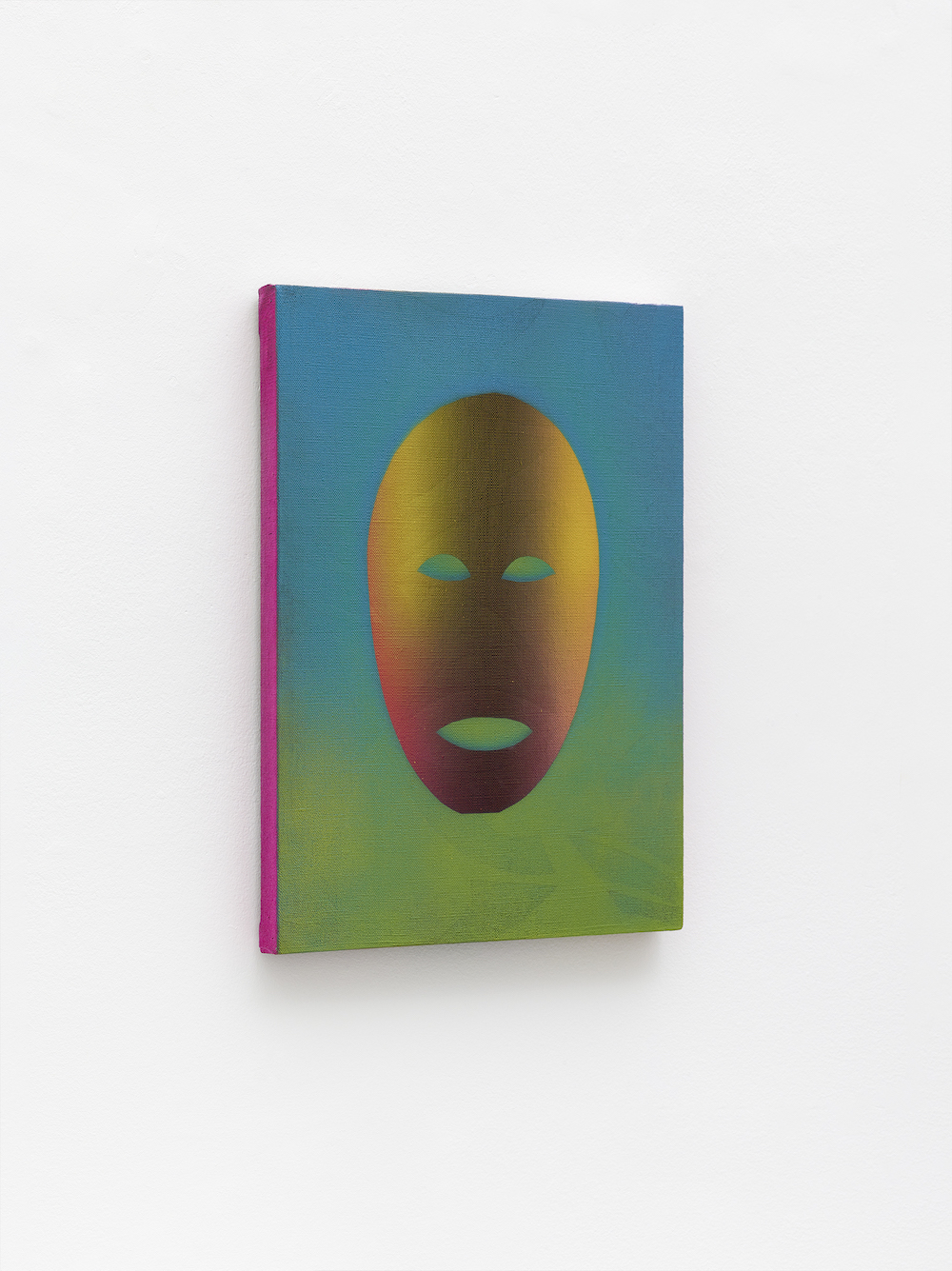
Carlos Amorales
Bubble Mask 02, 2021
Acrylic and enamel paint on canvas
40 x 30 cm (15,75 x 11,81 in)
Inv: CAm 21 008
Bubble Mask is another variation, yet they operate in a different color plane of gradients. Placed in the foreground of the painting, a mask seems to be the most acute part. Yet, a mask conceals something from view to cover up a similar linguistic pattern in the background. The mask also appears in the artist's latest video work as a connector image between two worlds, the digital and physical, articulating current shifts in representation.
In both painting series, Amorales draws from past series like El esplendor geométrico (2015) and La Orgía de Narciso (2020), continuing the explorations of color, space and repetition.
Working on these painting series during the height of the pandemic provided an outlet giving consistency and certainty in the most uncertain time. The practice provided a concentrated emotional and energetic outlet, a routine to get lost and find relaxation by literally bringing order to chaos. The centrality of color allowed Amorales to react to the different stimuli of the various hues while detaching from anxiety-ridden reality.
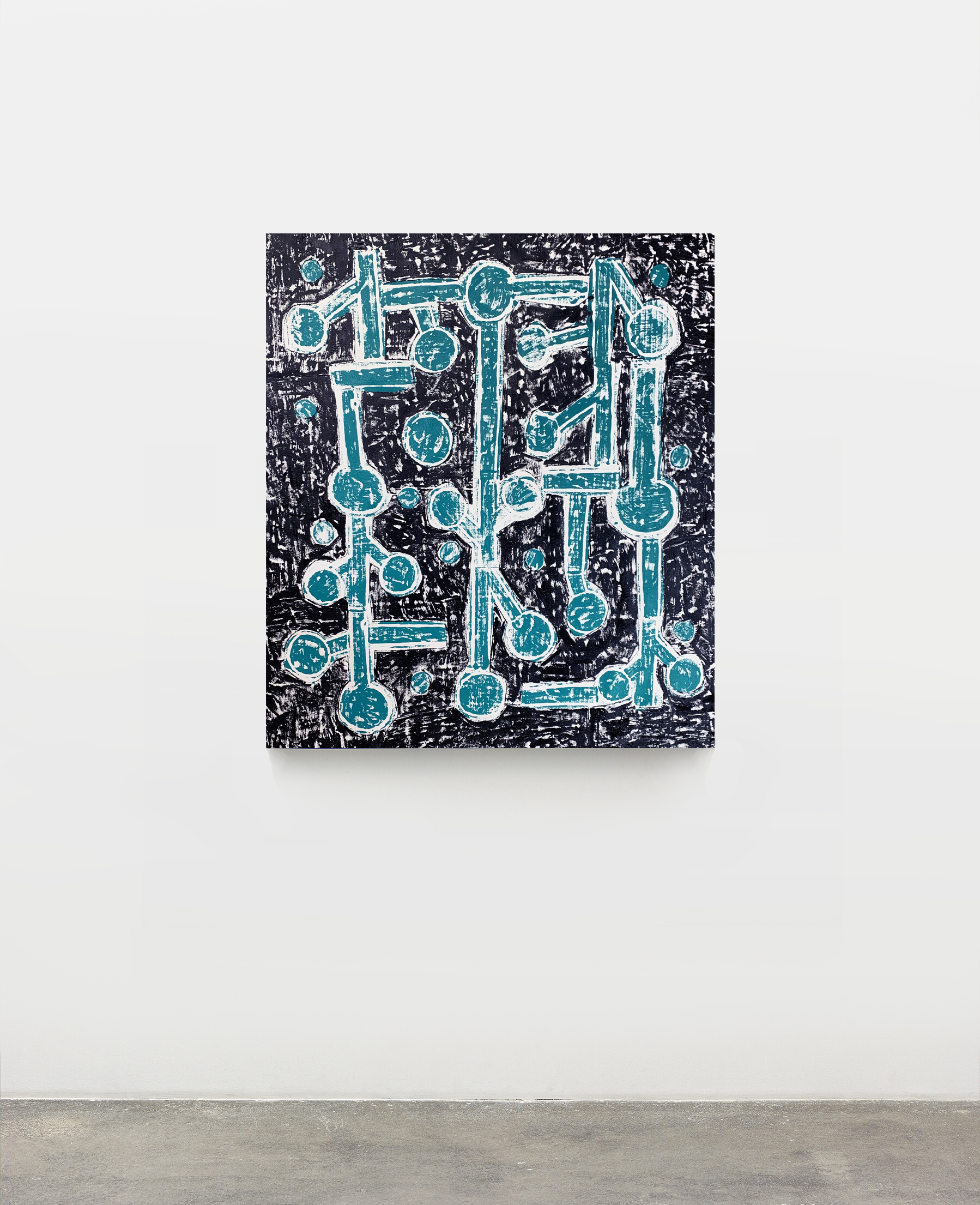
Olaf Breuning
Growing in the Dark, 2020
Wood cut print, gesso and acrylic on canvas
145 x 130 cm (57,09 x 51,18 in)
Inv: OBr 20 021
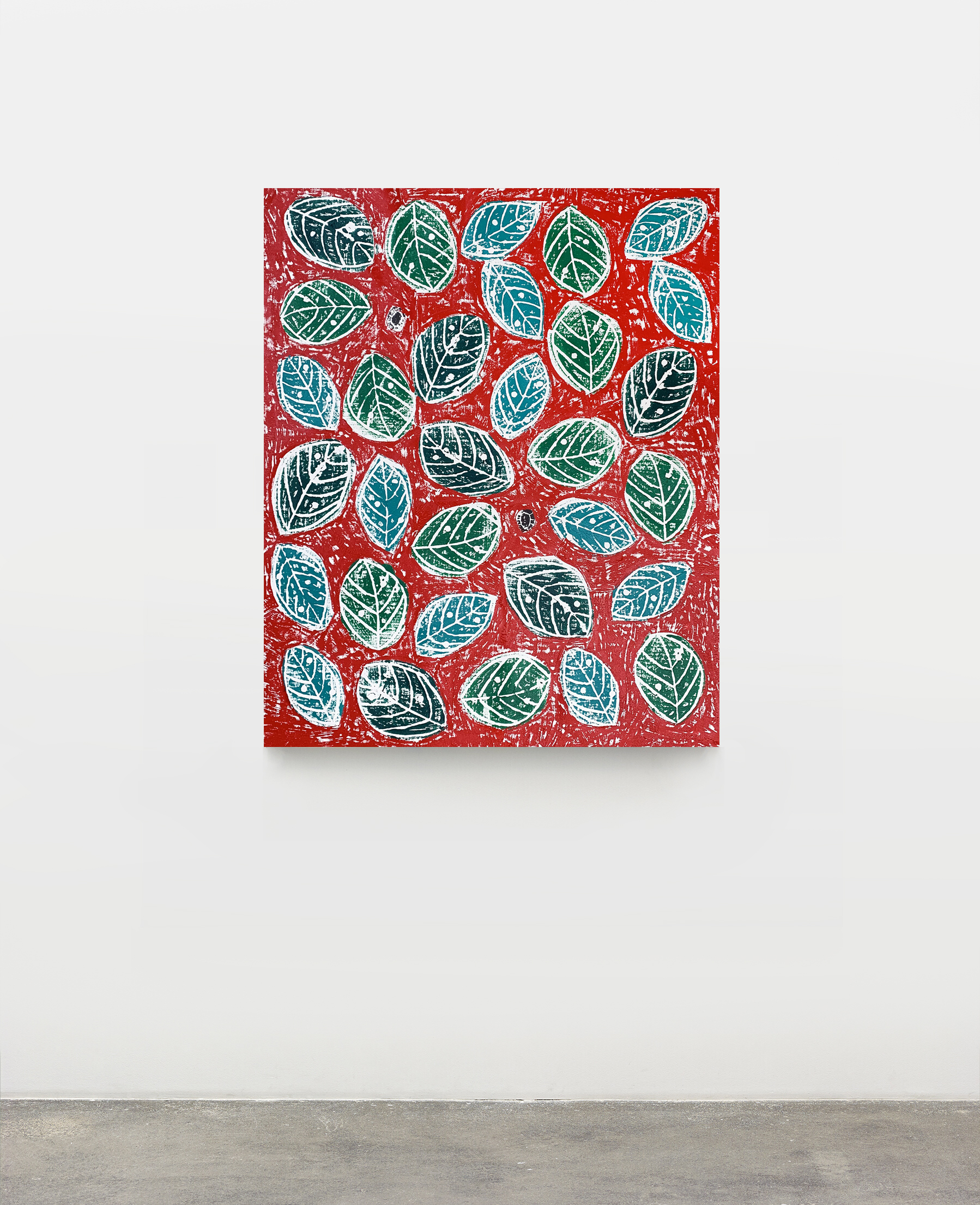
Olaf Breuning
Leaves, 2020
Wood cut print, gesso and acrylic on canvas
161 x 132 cm (69,39 x 51,97 in)
Edition of Unique
Breuning returns to a more raw mode of production for his paintings, using roughhewn, chainsaw-cut woodblocks to stamp out vivid and chaotic compositions. The imagery made with the carved blocks––shapes of waves, stars, raindrops, and blades of grass––conjures a time before technology was at the heart of our lives, when we lived more in tune with our natural surroundings. Evoking meteorological maps of turbulent weather, the paintings are a metaphor for the rapid pace at which climate change is affecting our environment, which is in constant disarray. The artist hopes that they are also a call to action, or at the very least, a reason to rethink our relationship with nature and the consequences of our actions.
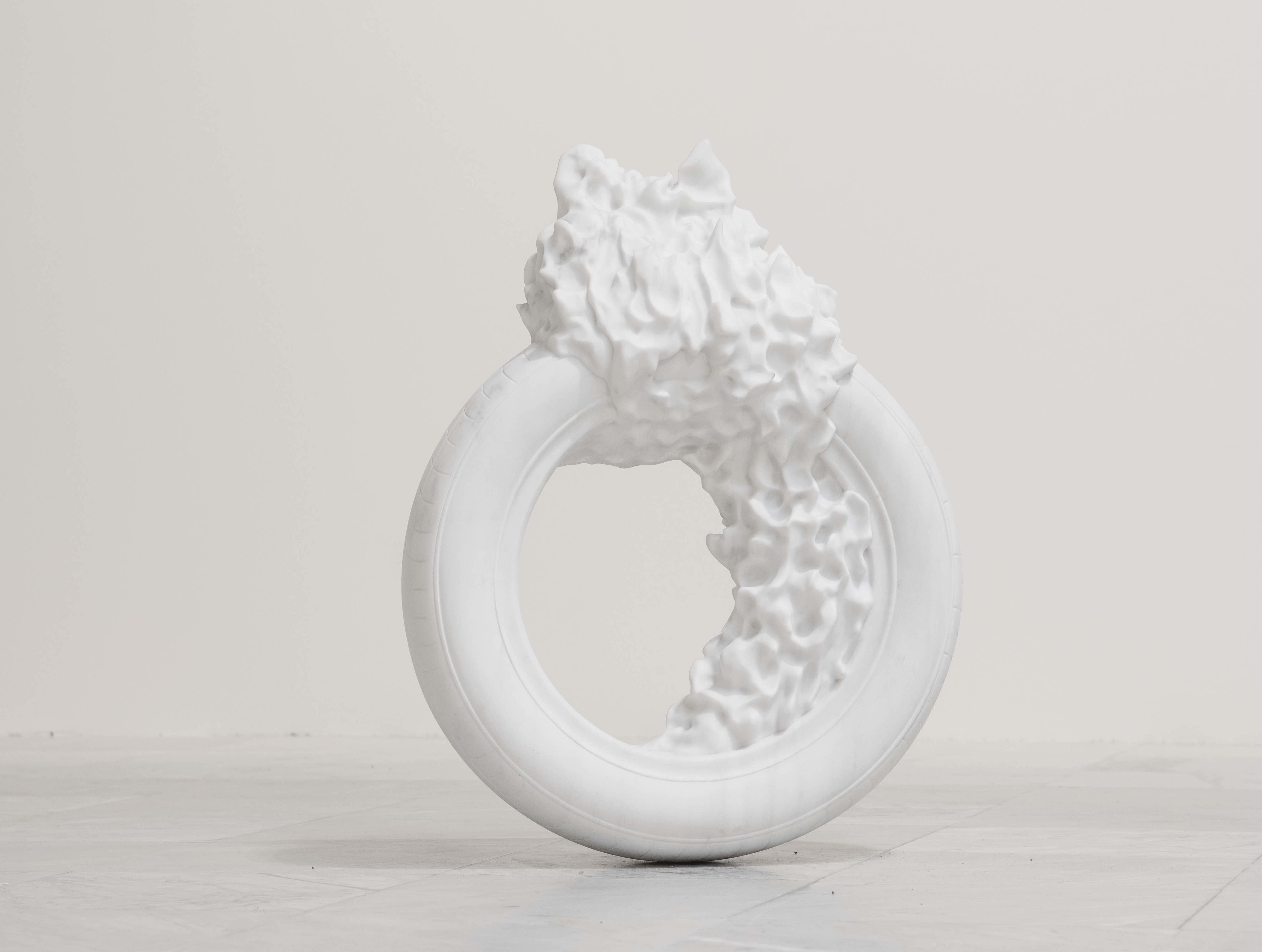
Jone Kvie
Evolution, 2017
Carrara Marble
77 x 25 x 60 cm (30,31 x 9,84 x 23,62 in)
Edition #1/3, 1AP
Inv: JKv 17 010.1
_
With an ongoing interest in the workings of the world and our place in it, Jone Kvie explores both the means and the limitations of sculpture by addressing various phenomena in the physical world and in society, many of which we still struggle to understand. How can we know or experience something abstract as a material fact and through this contemplate its significance?
"The sculpture is based on an image I saved from a Newspaper of a protest in Turkish Kurdistan, when Erdoğan bombed the area to start a conflict with the Kurds. It is of two rolling and burning tires, with a young boy, a teenager running behind it. It reminded me of the old children's play, where you run after a tire with a stick. So, this image has this aspect of both play and political violence. I molded the tire and cast it in plaster. Then I modeled the fire in wax and had it all carved in white marble.
I couldn’t let go of the image of the burning tire – this burning object is a universal symbol and a global phenomenon which expresses free will or the desire for transformation. I chose marble as material because the stone has been used for building monuments throughout history – with the flames coming out of it, the sculpture Evolution becomes sort of an anti-monument, which symbolizes man’s will to change his own situation. I wanted to take this global symbol of unrest and make it into a kind of anti-monument.
I was also inspired by this national monument to Victor Emmanuel II in Rome, a large marble complex with a brazier that has an eternal flame that I saw during my residency in Rome. These two images joined in my mind. So the object has many layers. It also encapsulates my interest in fire, materials changing from one material to another, of chemical processes, and the Greek philosopher Heraclitus. In this sense, I the wheel can be seen as a kind of symbol of time. Together these images led me on to forming Evolution; because of both its form and material the sculpture continues the history of the monument at the same time manifesting human’s desire for change."
- Jone Kvie
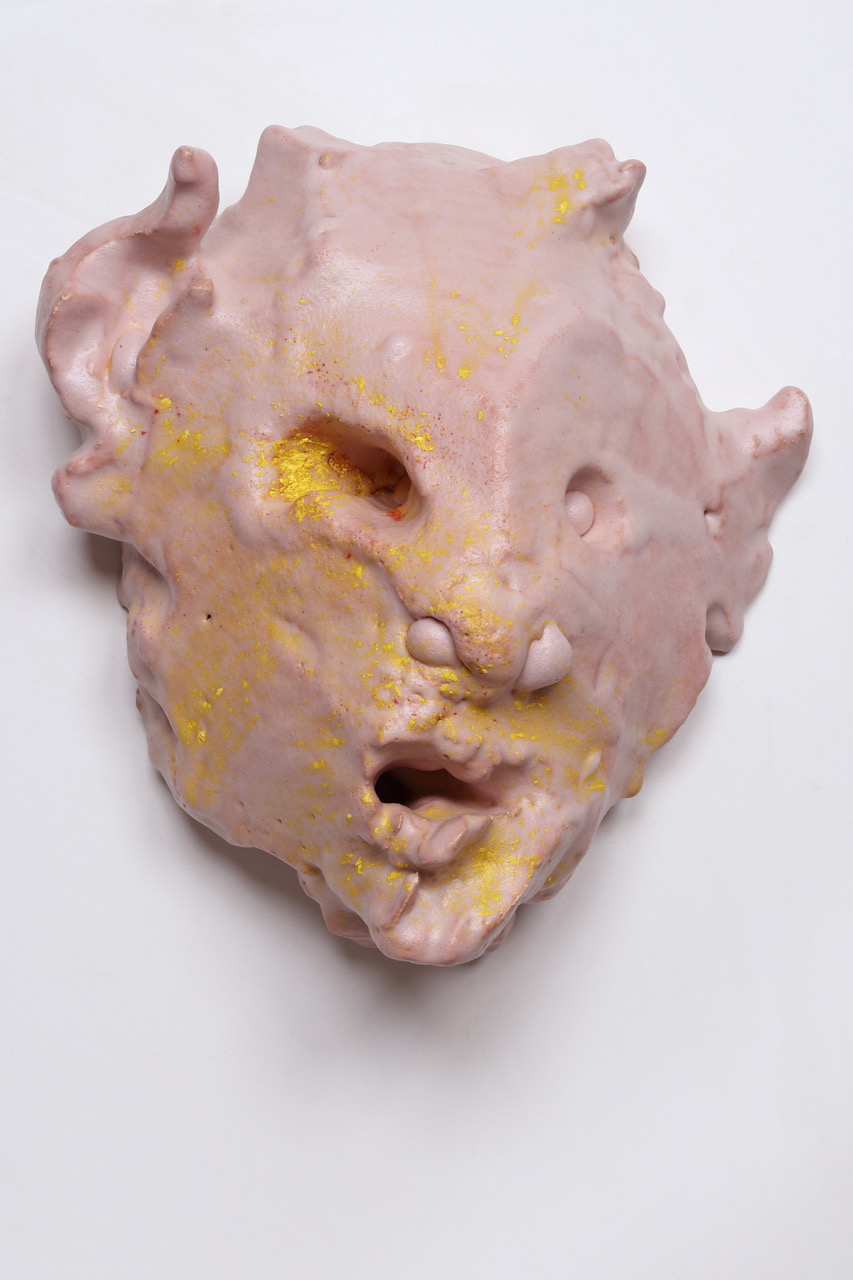
Gert & Uwe Tobias
Untitled, 2019
Glazed ceramic
35 x 32 x 17 cm (13,78 x 12,6 x 6,69 in)
Inv: GUTo 19 025
Gert & Uwe Tobias was born and raised in Transylvania and is currently living in Cologne. They are known for their unique imagery, inspired by both the traditional folk myths of their country of origin and popular culture. Their artistic practice comprises ceramic sculptures, painting, paperwork and large color woodcuts on canvases, the latter which combine the classic painting genre with a well-known printing technique used for the traditional propaganda making as well as in pop art’s repetition of motifs. Instead of carving out the figure into the block of wood, they shape the individual motifs in plywood and use a roller to apply the paint to the surface of each form, which finally transfers the color to the canvas. In this way, Gert and Uwe Tobias develop a well-known tradition and method.
Figuration is always the focal point of the work, whether it is made sculpturally or picturesquely, and their unique way with imagery has become their trademark which has placed the artist duo firmly on the European contemporary art scene. Their artistic universe thus has a direct connection to different art historical and cultural epochs, and in this way also reflects the anti-nostalgic use of images of current popular culture. Inspired by surrealism and abstract modernism, art history is an essential key to opening and grasping Gert & Uwe Tobias’ distinctive imagery. This matrix of isms breaks down the conventional distinction between art and craft and provides a renewed opportunity for the imagery of the works to re-emerge on its own terms - as an allegory of the fluctuating character that characterizes the contemporary art experience.
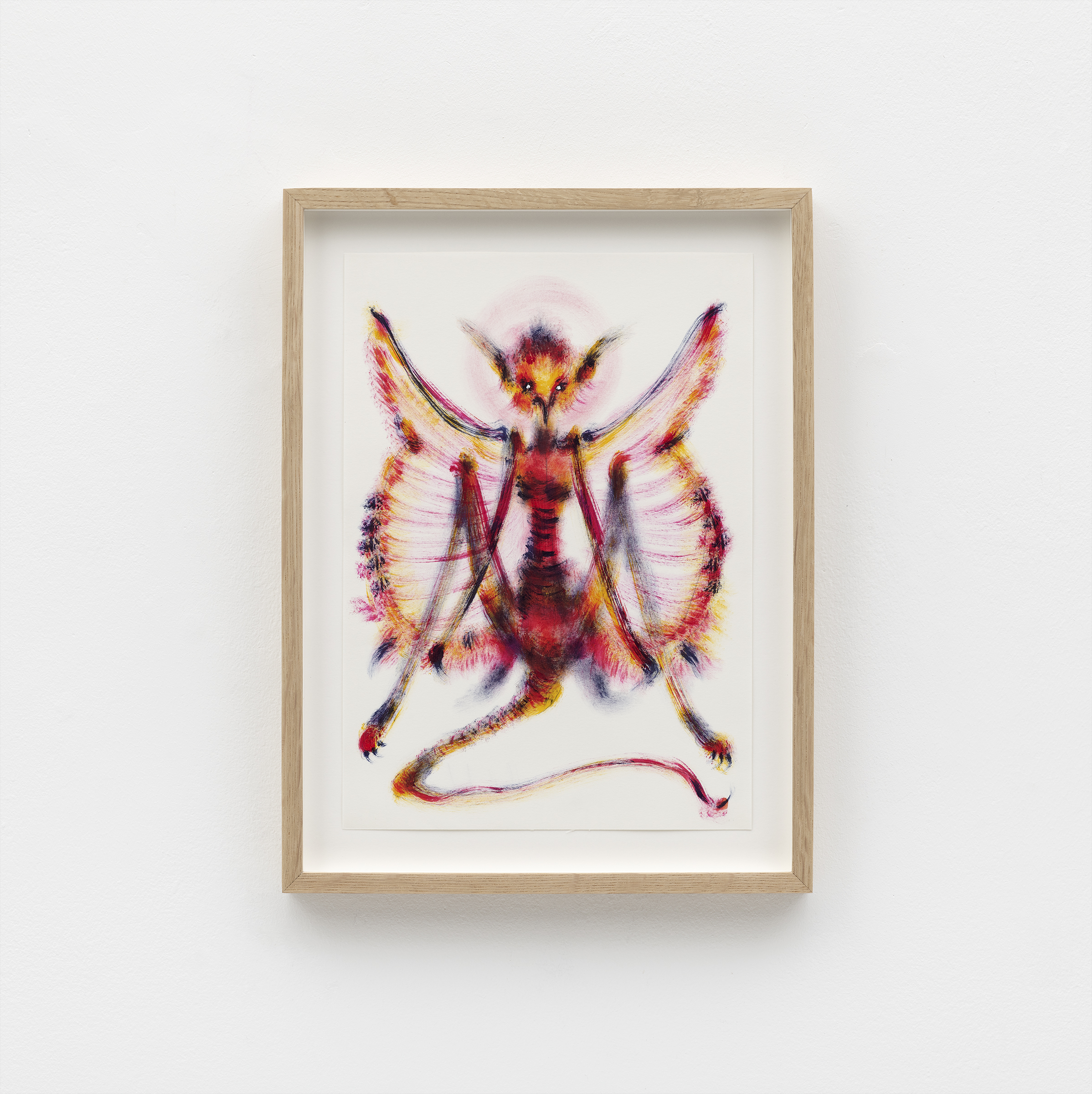
Gert & Uwe Tobias
Untitled, 2021
Mixed media on paper
29,7 x 21 cm (11,69 x 8,27 in)
Inv: GUTo 21 001
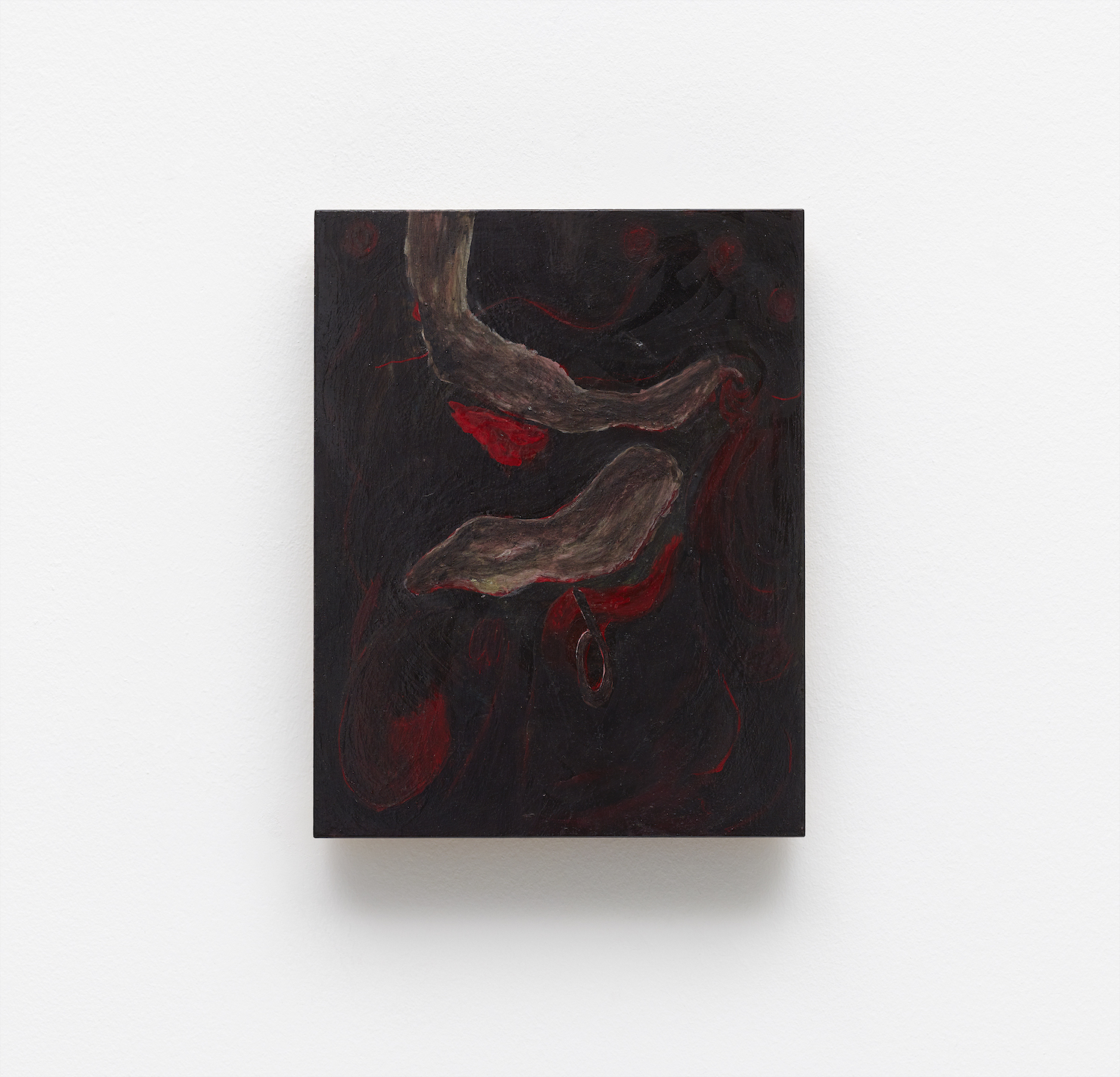
Lea Porsager
GLOSSOLALIC ICUnTS VII , 2020
Wood, egg, soil
28 x 21 cm (11,02 x 8,27 in)
Inv# LPo 20 016
The spirit of an artwork "Ignites on what is opposed to it, on materiality" the philosopher Theodor W. Adorno wrote in the middle the 20th century. There is plenty of both matter and wind in Porsager's exhibition to turn the spirit on - but when you consider materiality from the point of view of what is imperceptible, the relationship between matter and spirit becomes a slippery issue. It is by no means a given what spirituality means today. In the exhibition, another route to the spiritual is indicated by a series of paintings that, with a sexually explicit pun, sample the forms of religious icons as a pictorial system to open the soul and make the divine appear: GLOSSOLALIC ICUnTS I-X.
Between the seen and the unseen, and between states of excitement and exhaustion, we might find an entry point to the spiritual - understood as the need to imagine and re-create ways of sensing the deep material dimensions of the world: an exercise in cosmic attunement and humility.
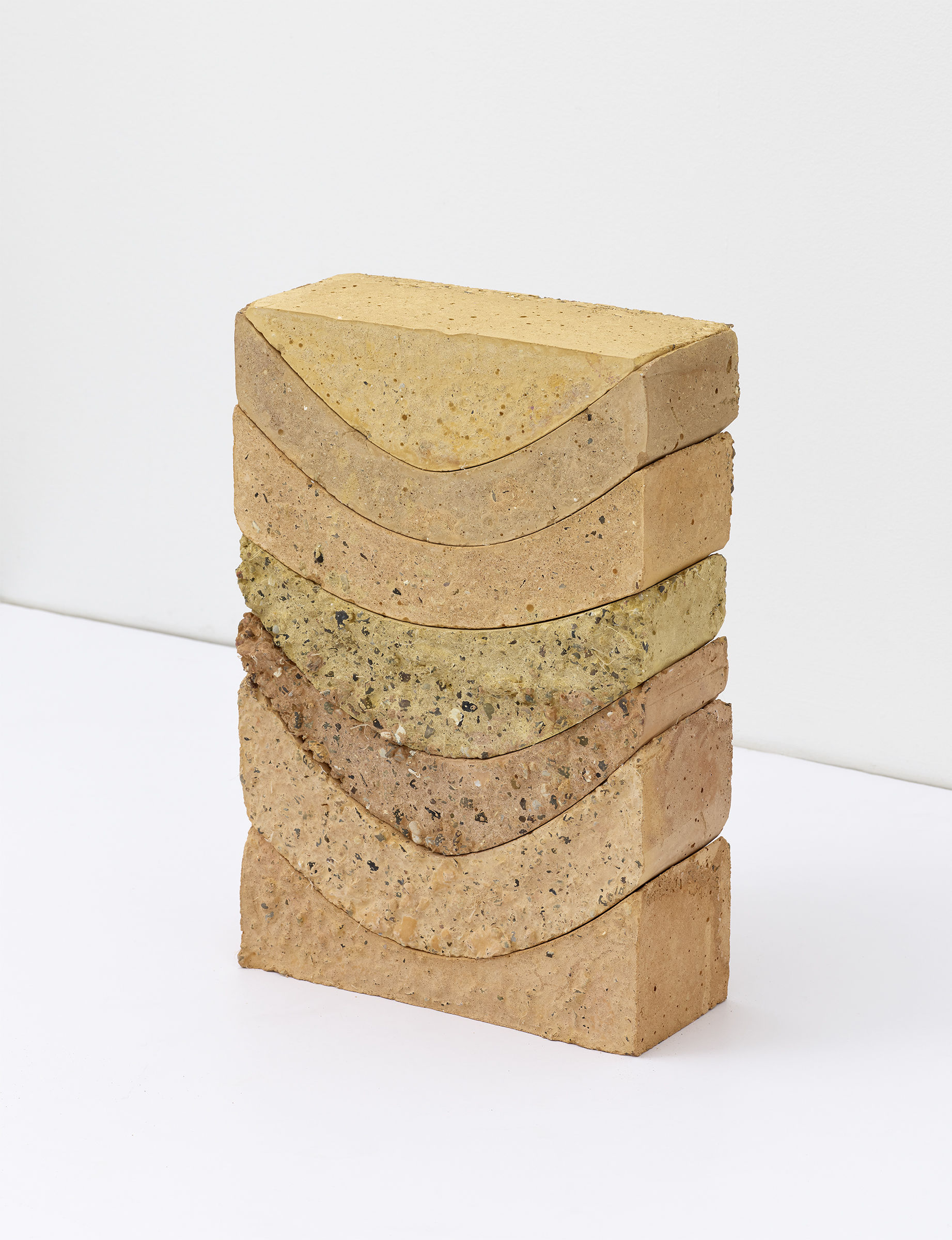
Tove Storch
Untitled, 2020
Concrete, powder pigment
44 x 30 x 11 cm (17,32 x 11,81 x 4,33)
Inv# TS 20 023
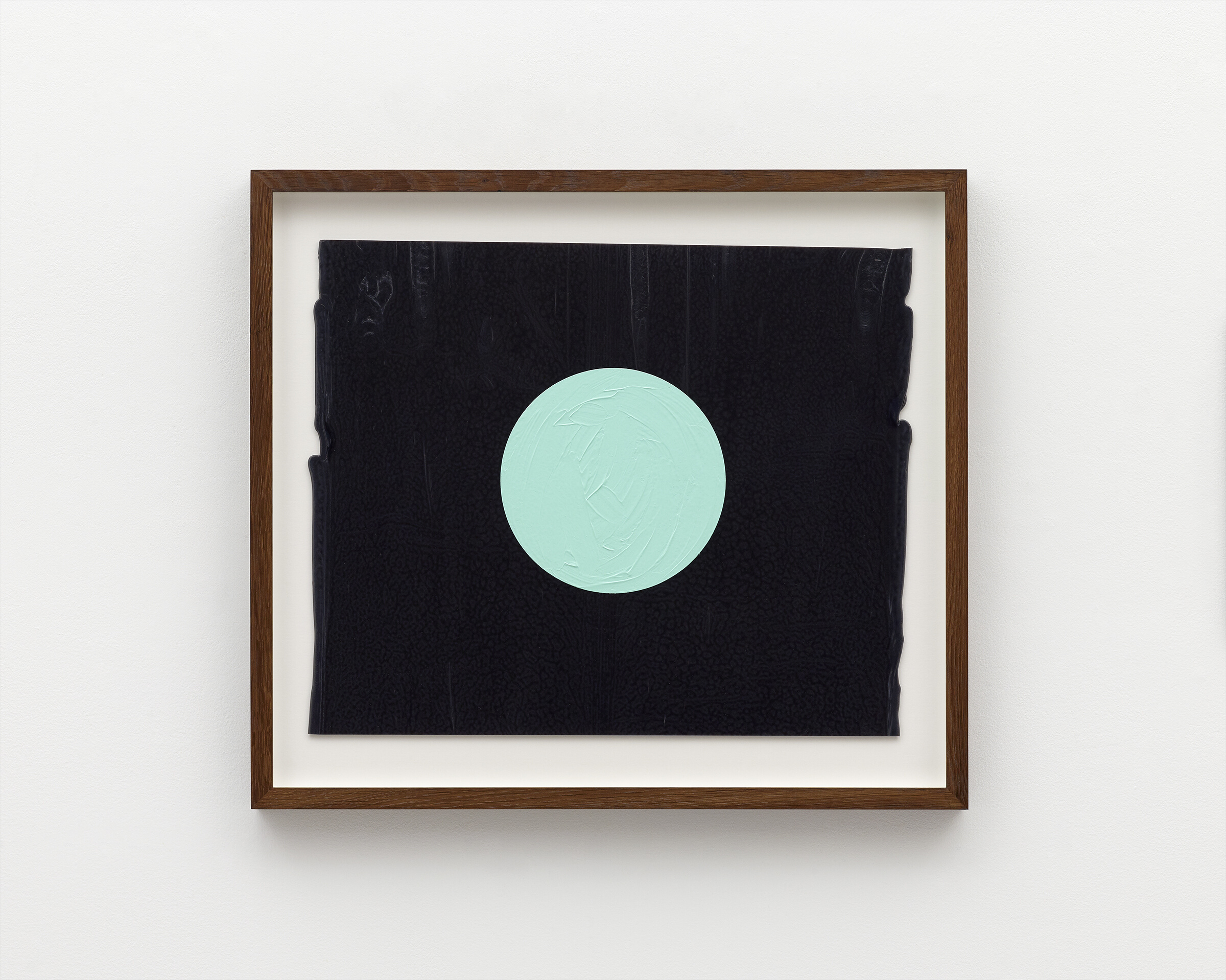
Mads Gamdrup
Dark blue and light blue , 2020
Acrylic paint on hand rolled glass
Framed Dimensions 57 x 64 (22,44 x 25,2 in)
Inv: MG 20 023
In his stained glass paintings, Mads Gamdrups examines the transparency and texture of colors. In both the monochrome and the multicolored paintings, Gamdrup works to create a space where the colors and differences in the texture of the glass are challenged by the painted circles. In the relationship between the glass and the painted circles, space is created in itself - and another space is created when the individual works are part of a serial context. This gives the pictorial expression a spatiality to use diversity as a quality - and opens up for individual interpretations.
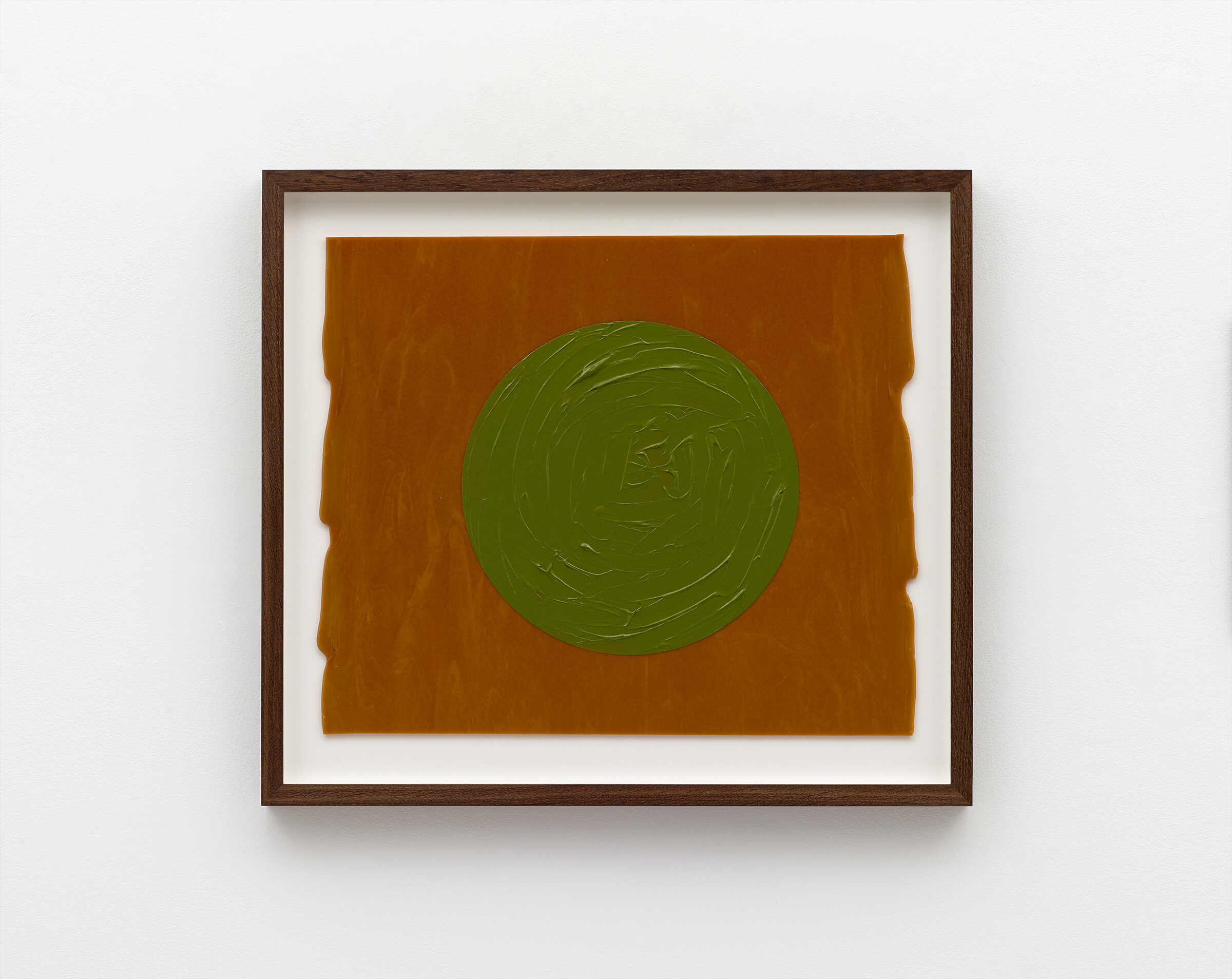
Mads Gamdrup
Light brown and dark green, 2020
Acrylic paint on hand rolled glass
57 x 64 cm (22,44 x 25,2 in)
Inv: MG 20 027
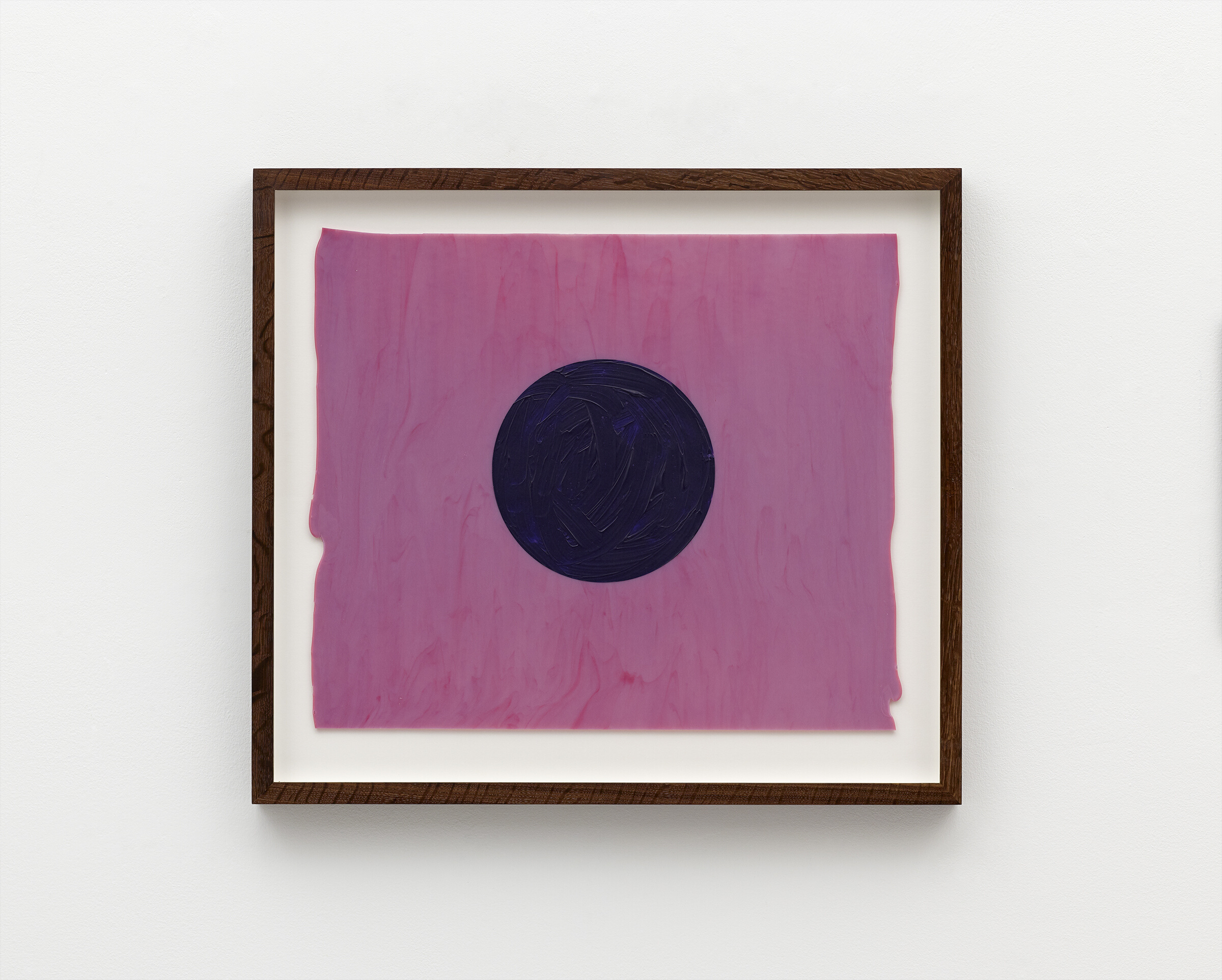
Mads Gamdrup
Light purple and dark blue, 2020
Acrylic paint on hand rolled glass
57 x 64 cm (22,44 x 25,2)
Inv: MG 20 028
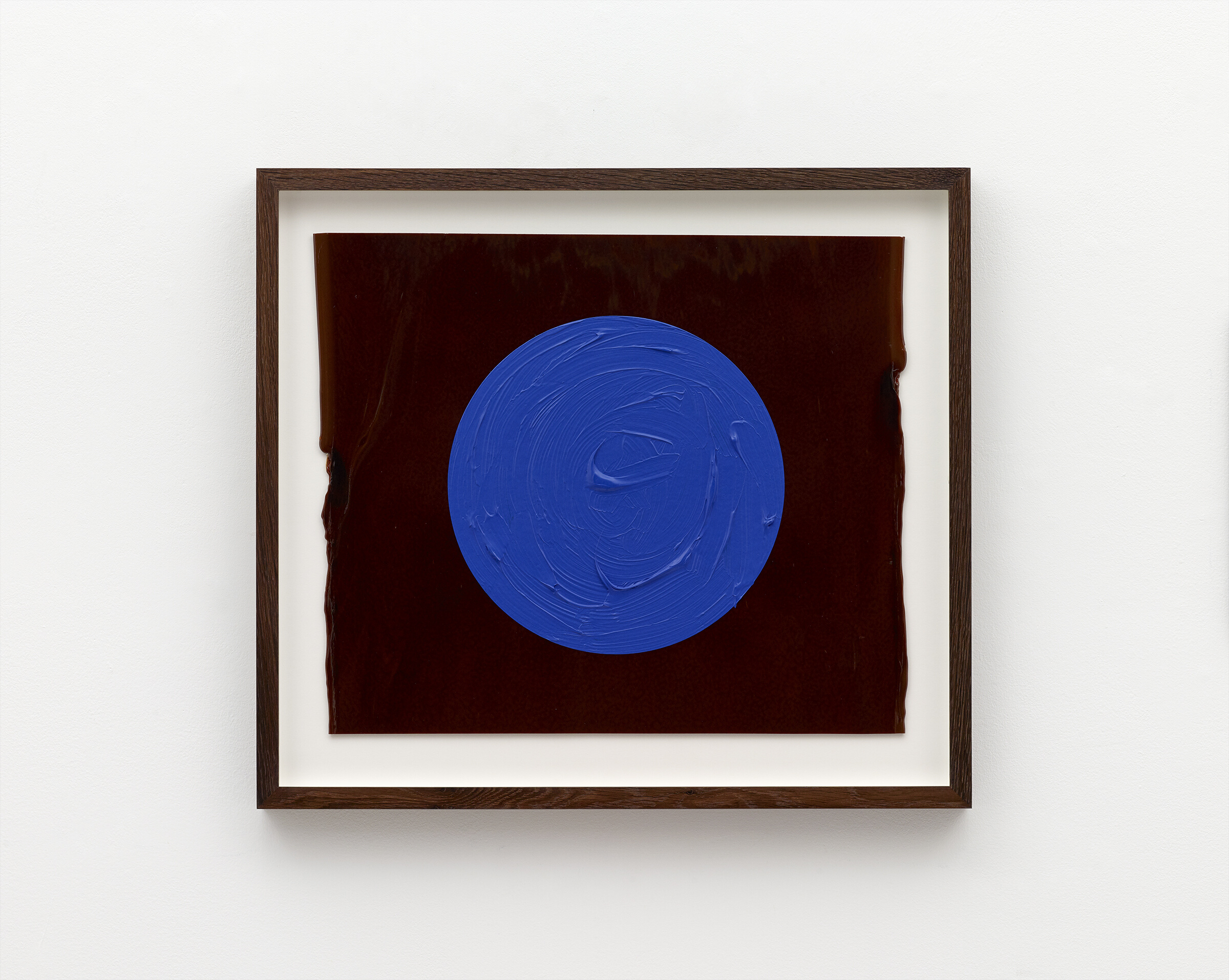
Mads Gamdrup
Black and blue , 2020
Acrylic paint on hand rolled glass
57 x 64 cm (22,44 x 25,2)
Inv: MG 20 029)
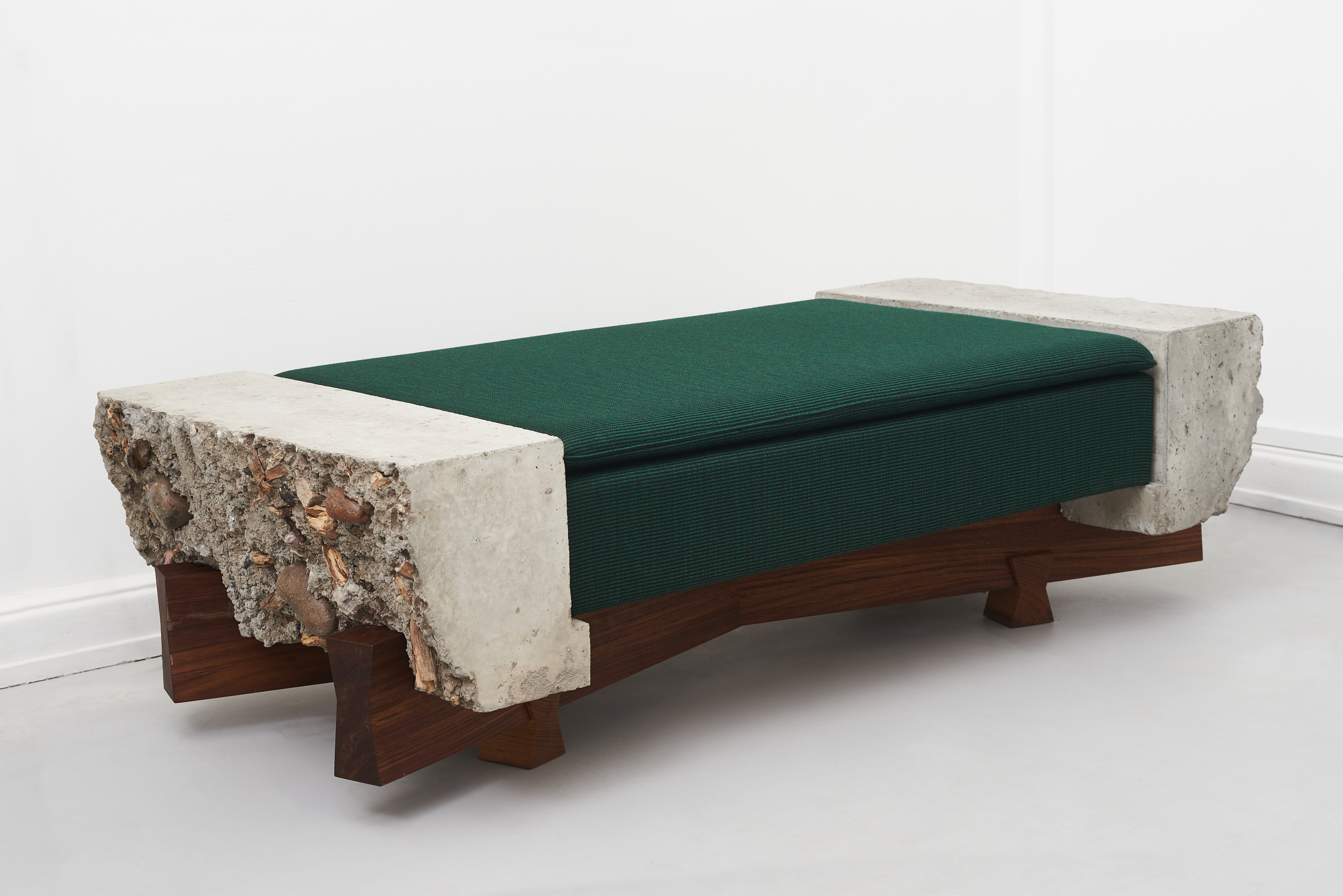
FOS
x-bench small , 2021
Concrete, stones, teak wood, kvadrat fabric
160 x 78 x 45 (62,99 x 30,71 x 17,22 in)
Inv: MG 21 002
A paradox item, that can embody an idea of a welcome loneliness as well as welcome company. A bench is the most archetypal item of furniture – a name that’s inscribed in our language and through time been a part of our social surroundings. The word bank even derives from the word bench, that was once used to trade from.
x- bench small is a social space and generous furniture with no front or back – a place where you invite someone else into your private space and create a space to talk, watch and feel the rhythm of the life around you.
FOS works with objects and architectural projects that interact with its physical surroundings and explore how social relations influences each other.
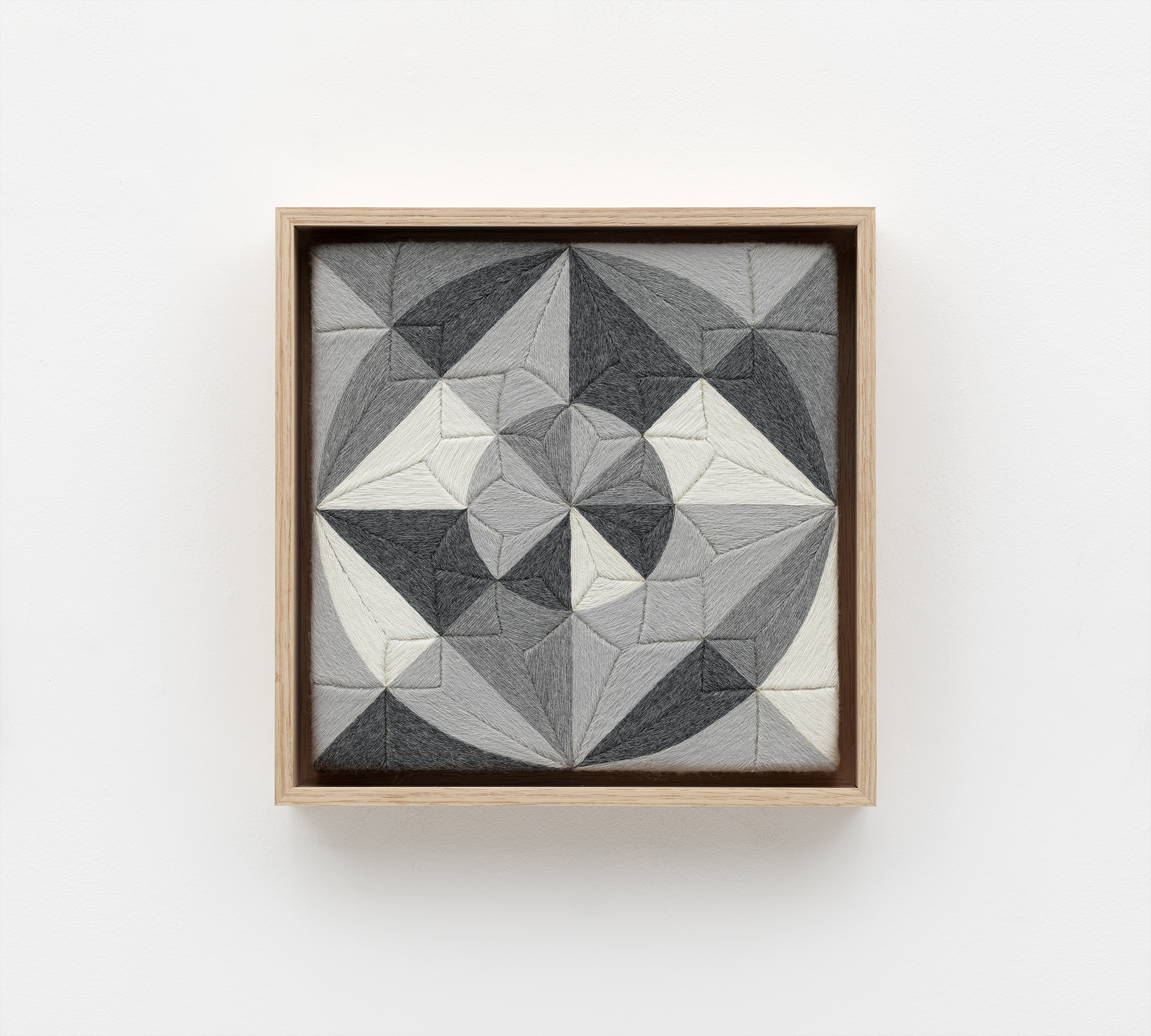
Eduardo Terrazas
Possibilities of a Structure: Cosmos 1.1.515, 2021
Wool, yarn on wooden board
30 x 30 cm (11,81 x 11,81 in)
Inv# ET 21 004
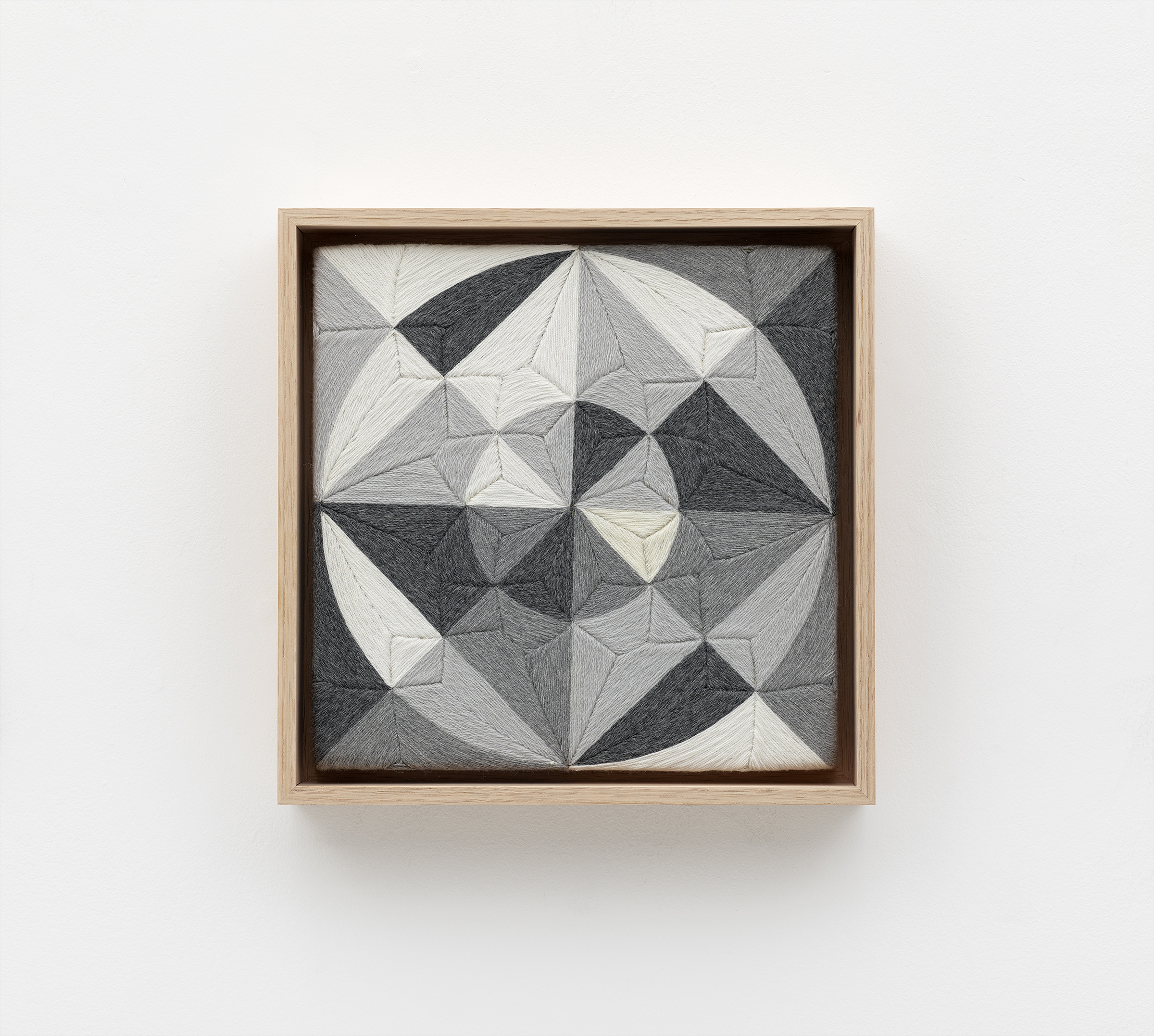
Eduardo Terrazas
Possibilities of a Structure: Cosmos 1.1.516, 2021
Wool, yarn on wooden board
30 x 30 cm (11,81 x 11,81 in)
Inv# ET 21 005
Eduardo Terrazas (1936) is a Mexican creator who has taken genuine interest in studying and contemplating the complexity of our contemporary world. Spirit, beauty, order, and technique are the cornerstones that define his visual universe. His endeavors –for over fifty years- include an array of disciplines: design, architecture, urban and regional planning, visual arts and environmental issues, responding and reflecting creatively to our changing reality, proposing alternate methods of inhabiting our world, different forms to relate one another, new ways to portray and understand our cosmos.
CONTACT:
Nils Stærk, Nils@nilsstaerk.dk
Laura Goldschmidt, Laura@nilsstaerk.dk
Nina Nørreby, Nina@nilsstaerk.dk




